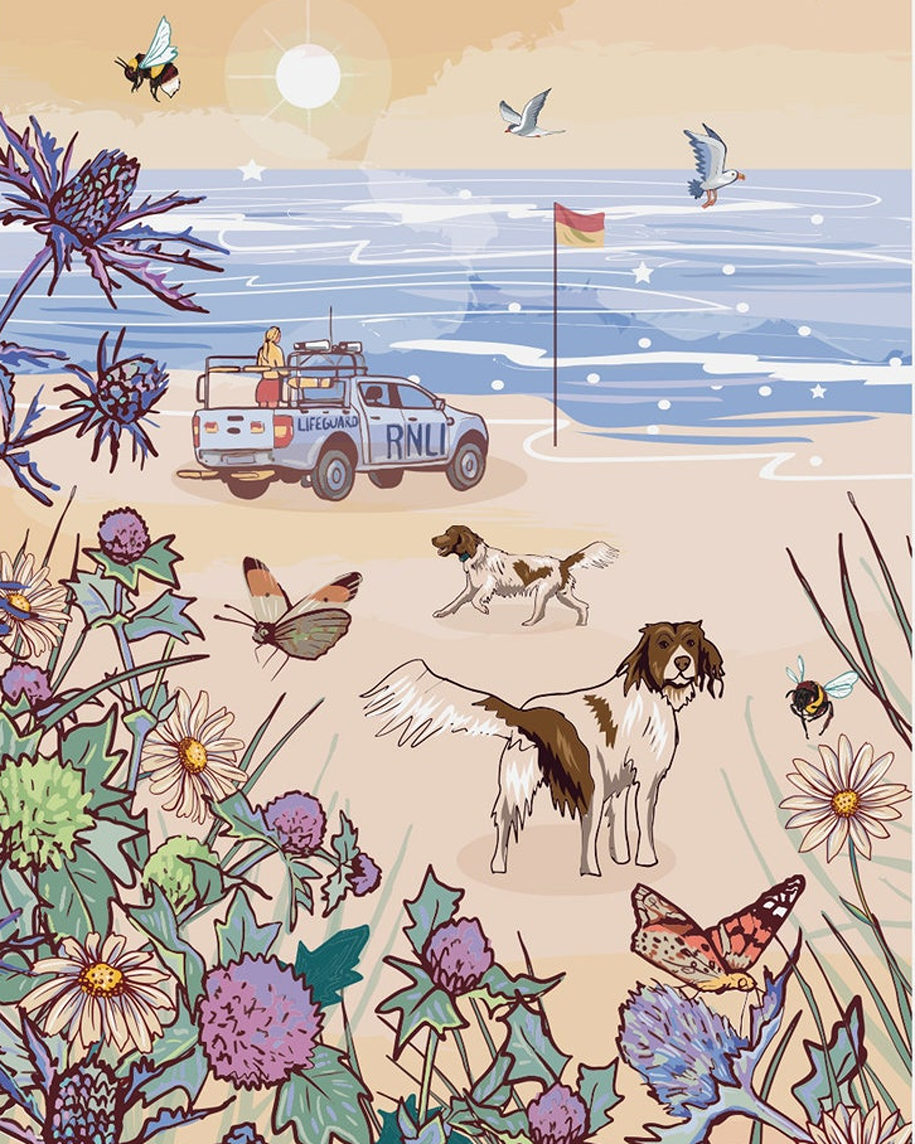How to Keep Dogs Safe by the Seaside

Dogs love the seaside, so check for seasonal bans before travel (a few areas ban dogs year-round, due to lack of shady places). Clean up with biodegradable poop bags.
For emergencies, call 999 or 112 and ask for Coastguard (RNLI will help pets).
Before You Travel to the Seaside
- Check tide times before travel, as some beaches disappear when the tide is in.
- Driving with Dogs has details of walks near motorway exits.
- Take water and a bowl, and make notes of dog-friendly places.
- Don’t let dogs run for an hour (or two) after long drives, to prevent bloat.
Seaside Safety Tips for Dogs
- Humane dog training helps keep dogs safe at the beach.
- Keep dogs away from sand dunes (home to nesting birds and seal pups (hidden by mums) in breeding season).
- Keep dogs away from jellyfish (even dead ones can sting). If your dog is stung, rinse area with sea water, remove tentacles/barbs and seek immediate vet advice. Keep dogs away from crabs, birds and dead fish.
- Don’t let dogs drink seawater (contains salt) or eat seaweed (can swell in the stomach as it dries).
- Don’t throw toys out to sea (dogs will keep playing, even if exhausted).
- Keep dogs away from palm oil (white waxy lumps that wash up). Report to your council if seen..
- Discourage digging near loose sand or near water lines (read how to get out of quicksand).
- Many coastal flowers are toxic to pets, so keep away if you have flower-nosey dogs.
Keep Dogs Safe in Warm Weather
- All dogs (especially large, elderly and flat-faced dogs) can get heatstroke, so only give short walks (early morning or late evening) in warm weather.
- Ask vet about pet-safe sunscreens. Never use human sunscreens, and wash off your skin before pets kiss you, due to zinc oxide).
- Keep dogs away from adders. Dog-Friendly Cornwall has tips on when to avoid walking (‘safe hours’ were before 9am and after 7pm). But rising temperatures means times may change. Adder bites need emergency vet care (read how to avoid & treat adder bites).
Heatstroke: If dogs are panting with red gums or vomiting/collapsing, move to a shady area and pour cool (not iced) water over the body (not head) until breathing normally. Give small sips of cool water.
Use a fan (or place ice wrapped in a towel) on the groin and armpits. Don’t place wet towels on the body, this can raise temperature. Turn on air-conditioning in the car, when driving to the vet.
Never leave dogs in (even warm) cars, as temperatures heat up fast (same with glass conservatories). If you find a dog needing help, smash the window and move the dog to a shady area and follow advice above, then call the vet, RSPCA and police (take the registration number).
It’s unlikely you’ll be charged with criminal damage, as people who forget their dog will likely feel terrible, and not prosecute.
Post-Beach Dog Care
- After beach (and countryside) walks, check fur and skin for ticks (often found on grassy dunes). Check for cuts between toes and paw pads.
- Rinse off seawater and sand (use lukewarm water around 37 °C) to avoid itchy skin, ear infections or stomach upset if licked. Give special attention to paws, bellies, ears and between the toes, but avoid getting water in the ears, mouth or eyes.
The Most Dog-Friendly Beach on Earth?
In northern California, the town of Carmel-by-the-Sea has police patrolling beaches to ensure dogs are not left in cars, and nearly all shops offer water bowls and biscuits. There is a ‘fountain of woof’ that spurts out fresh water for thirsty dogs. And a grassy area for dogs to relieve themselves.
Local pooches are photographed to raise money for shelters, by selling an annual dog calendar in shops.
Rules are strict. All dogs running loose must be ‘under voice control’. And aside from the beach and some trails, dogs must be on leads. Dogs also must be licensed, in case they get lost. And if an incident occurs (like a fight or bite), people are required to share details (just like with a car accident).






